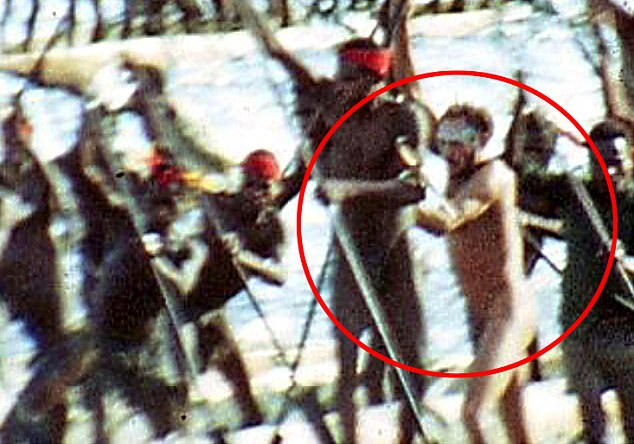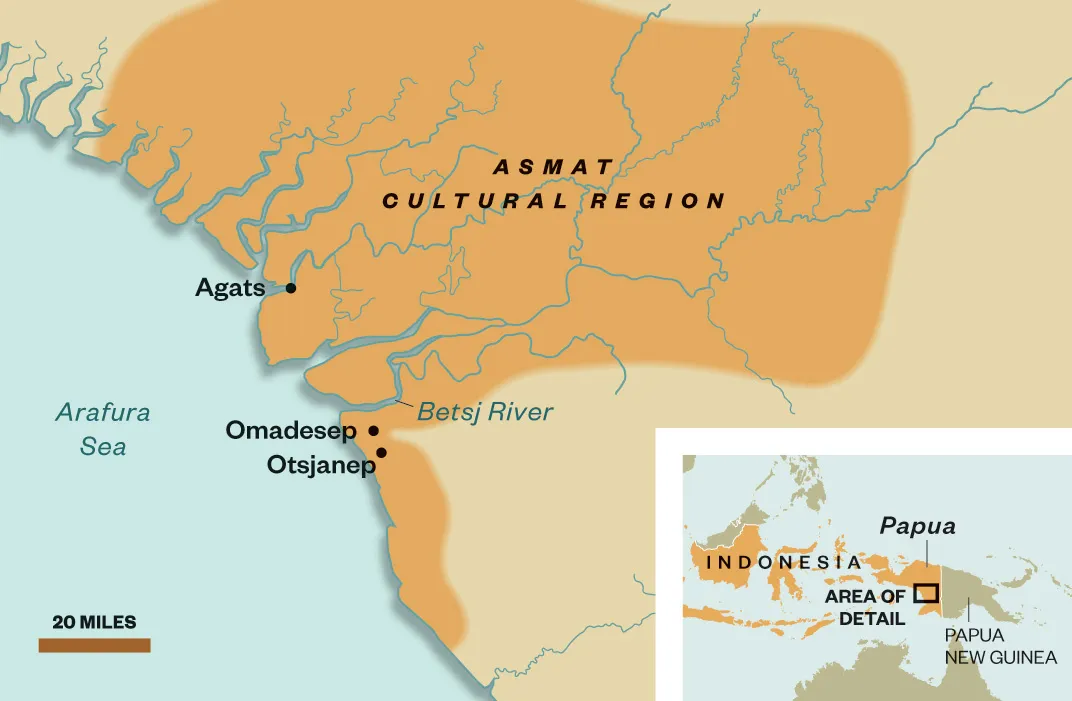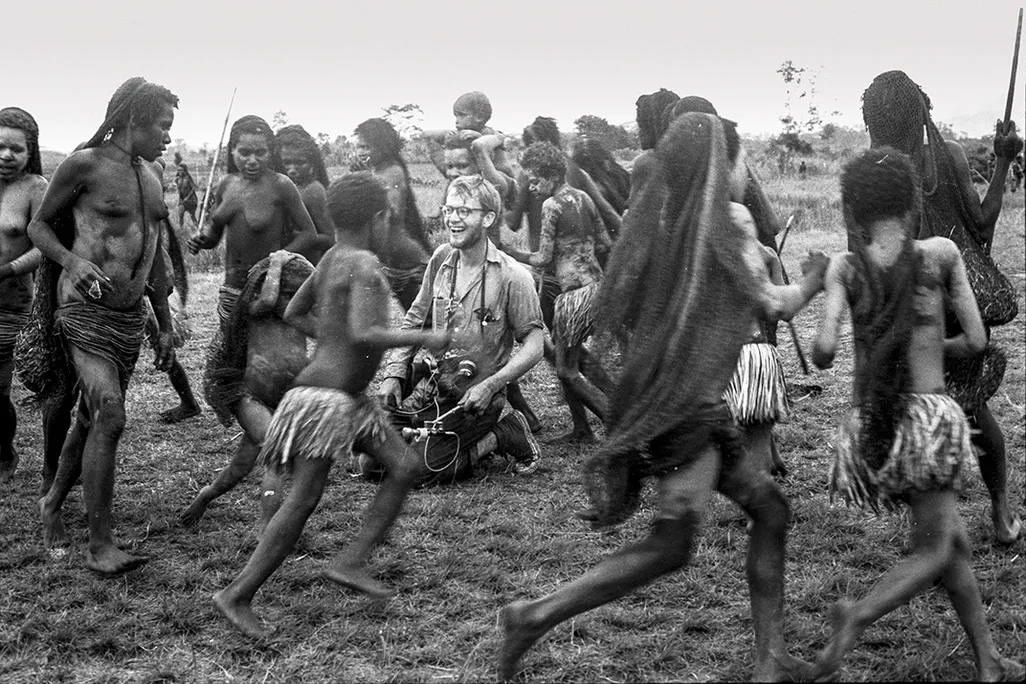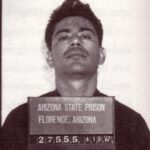
Michael Rockefeller was used to standing out. He was the son of Nelson Rockefeller, governor of New York and future vice president of the United States. His grandfather helped build the Standard Oil empire. Michael, though, seemed less interested in boardrooms and politics. He was drawn to places far from the marble floors of Manhattan — places that still felt untouched.
By 1961, Michael was 23, recently out of Harvard, and already looking for something bigger than the family name. His path had taken him to Dutch New Guinea, a region dense with swamps, rivers, and thick forests. He was working on a Harvard-backed ethnographic film, recording the lives of the Dani people, when something pulled his attention further south: the Asmat.
The Asmat carved wood into towering, intricate poles. They believed in ancestral spirits and cycles of revenge. They lived in villages accessible only by canoe, in a part of the world where colonial maps still left room for blank spots. For Michael, it was more than curiosity. He started collecting Asmat carvings, photographing rituals, and writing letters back home describing the region’s cultures like pieces of a puzzle he couldn’t stop trying to solve.

He wasn’t there as a casual tourist. He had returned after the formal expedition ended, choosing to stay behind and gather more of the Asmat’s woodcarvings and artwork for the Museum of Primitive Art, which his father had helped establish in New York. The plan was to immerse himself. Learn firsthand. Document everything.
One of his letters described his days as “thoroughly exhausting but most exciting.” He wrote about the subtle changes in carving styles between villages, the meanings hidden in ceremonial poles, and how hard it was to make sense of it all. But it was clear he believed it was worth the effort. He was chasing something few others in his world cared to understand.
By mid-November, he was traveling along the southern coast with Dutch anthropologist René Wassing. Their canoe, about 40 feet long, was equipped with two outriggers and held their gear and a few local guides. On November 17, the sea turned against them. A sudden wave swamped their boat, overturning it three miles from shore.
The guides swam for help, but Michael and Wassing were left drifting overnight, clinging to the hull in rough waters. By morning, Michael had made a decision. “I think I can make it,” he said. He tied two empty jerry cans and a gas tank together, fashioned a float, took a knife and compass, and began paddling toward land.
It was the last time anyone saw him.

Wassing stayed with the wreck until he was rescued the next day. What followed was one of the largest search efforts in the region’s history. The Dutch authorities sent out helicopters and boats. Asmat villagers were asked to search local rivers by canoe. Nelson Rockefeller himself flew in and joined the mission. So did Michael’s twin sister Mary.
Nothing turned up. Not a body. Not a trace.

At first, official theories pointed toward the sea. Maybe he drowned. Maybe a crocodile or shark found him before the shore did. The stretch he swam was nearly 12 nautical miles, depending on the current. The coast was flat, featureless, and easy to miss from the water. But the story never quite settled. The people closest to the ground — the missionaries, the villagers, the patrolmen — heard something different.
Stories began to circulate from the Asmat village of Otsjanep. They were not rumors passed among tourists. They came from people who had lived among the Asmat for years, who spoke the language, who understood the unspoken rules. And those stories said that Michael had reached land.

The details came slowly, then steadily. A Dutch missionary named Hubertus von Peij reported that four local men told him what happened. Michael had made it to the riverbank, half-naked and exhausted. A group of Asmat men debated his fate. Some wanted to help. Others saw him as a target. Years earlier, Dutch colonial forces had killed five Otsjanep men during a violent crackdown. Under Asmat customs, that kind of death required balance. A death for a death. Michael, they believed, fulfilled that requirement.
According to the accounts, he was stabbed but not killed immediately. He was taken upstream and finished off. His body was divided. His bones, especially the long ones, were repurposed into weapons and tools. His head and glasses were claimed as trophies. And his soul, in their worldview, helped restore order.

The Dutch authorities heard these stories but moved slowly. Patrolman Wim van de Waal collected a skull said to have belonged to Michael. It had a hole in the temple, and the jaw was missing — common signs of headhunting. But van de Waal was never asked to submit a formal report. He turned the skull over. That was it. No official follow-up came.
Internal politics were delicate. Indonesia had just taken over control from the Dutch, and tensions ran high. American involvement risked complicating the fragile transfer of power. On top of that, Nelson Rockefeller was a prominent figure in American politics. A full-blown admission of cannibalism might have created diplomatic backlash or domestic outrage. So the reports sat quietly. No charges were filed. The search ended. Michael was declared legally dead in 1964.

The Bones Speak Quietly
By the end of 1962, the story of Michael Rockefeller’s disappearance had become quiet. There were no press conferences. No new discoveries. Just fragments — conversations, sketches of rituals, pieces of testimony that sat inside mission reports and government memos. The theories were divided. One side held to the explanation of drowning. The other, largely among those who had lived closest to the story, believed something else entirely.
One of the early, detailed sources was Father Cornelius van Kessel. Like von Peij, he lived in the Asmat region for years and spoke the language fluently. He wrote to the local Dutch administrator to share what he had learned. The story matched what von Peij had reported, almost point for point. In some versions, Michael was still clutching the cans he used to float. In others, he was seen dragging himself to shore, confused and defenseless.
Van Kessel explained that revenge killings among the Asmat were not random. They followed a logic based on balance and retribution. The men responsible — named in some reports as Fin, Ajim, Pep, Jane, and Samut — were said to have lost family members in the 1958 Dutch crackdown on Otsjanep. Under Asmat tradition, those deaths could not remain unanswered. Michael, though a stranger, arrived at the wrong place, at the wrong time, with the wrong skin.

Nothing official ever came of these testimonies. Dutch authorities knew about the skull, the accounts, the lists of names. But with Indonesia asserting sovereignty over the region, and Nelson Rockefeller’s rising political profile, the information was shelved. Publicly, drowning remained the prevailing theory.
Journalists, however, did not let it go.
In 1969, reporter Milt Machlin traveled to New Guinea hoping to find answers. His goal was not to push a wild story of captivity or jungle madness. He followed the trail of whispers — of village reports, of skulls passed between hands, of patrol logs that hinted at something too uncomfortable to confirm. His conclusion was quiet but firm: the available evidence pointed to a killing.

Machlin’s findings were similar to the missionaries’. The killing had not been savage. It had been ceremonial. Deliberate. The use of bones, the handling of remains, the silence that followed — it all pointed to an act rooted in ritual, not impulse.
Years later, the silence was broken again.
In 2014, journalist Carl Hoffman published Savage Harvest. He traveled deep into the Asmat region, sometimes with translators, sometimes alone. He lived among the villagers, listened to old men tell stories late at night. In one village, a man pantomimed a killing while Hoffman filmed. The man warned him: the story was for Hoffman alone. If he told anyone, he and his people would die.
The message echoed older missionary reports: Michael reached shore. He was captured. He was killed. He was eaten.
The story in Hoffman’s book matched details found in 1960s patrol diaries. Same names. Same locations. Same motive. The region had changed in the decades since, but the memory of Michael’s visit still lingered. According to Hoffman, the villagers later faced a cholera outbreak and believed it was retribution for what they had done. The killing had consequences, even within their belief system.
Michael’s twin sister, Mary, read Hoffman’s book. In her own memoir, she acknowledged the rumors but leaned toward drowning. She cited the offshore currents, the weather conditions, and the sheer distance from shore. Her family, especially her mother, had never fully accepted the possibility of a ritual killing. Over the years, the Rockefellers declined to make public comments on the more gruesome theories.
Still, there were quiet moves.
In 1979, author Paul Toohey claimed that Michael’s mother had hired a private investigator to travel to New Guinea. The investigator, according to Toohey, traded a boat engine for the skulls of three men. He returned to New York, convinced that one belonged to Michael. The Rockefeller family never acknowledged the claim. A report by the History Channel suggested a reward of $250,000 had been offered for conclusive proof.
Back in New Guinea, none of the Asmat tribesmen were ever charged. Their accounts were filtered through missionaries, patrolmen, and reporters, but the men themselves never spoke to foreign investigators directly. The region remained difficult to access. The Dutch colonial structure had collapsed. The area was now part of Indonesia, and local priorities shifted with new government control.
Michael’s art collection, however, survived.
Many of the wooden carvings he collected were sent to New York before his disappearance. Today, they sit in the Michael C. Rockefeller Wing at the Metropolitan Museum of Art. Visitors can see bisj poles, ancestor statues, and ceremonial shields. The collection is striking, and it remains one of the largest and most detailed windows into Asmat culture outside Papua.
.jpg?1748705645)
The irony is quiet but clear. The same cultural tradition that may have ended Michael’s life is preserved in climate-controlled rooms bearing his name. The wood he once held, the masks he admired, the weapons he watched being carved — all of it now sits under glass, watched by tourists and students who may never know the full story of how it got there.
In Otsjanep, the river still moves the same way it did in 1961. The shoreline where Michael may have pulled himself ashore has changed only slightly. The ceremonies have evolved, but their core beliefs about balance, ancestors, and vengeance remain.
The story of Michael Rockefeller is not conclusive. There is no body. No signed confession. But the stories passed down in the region have not changed much over the decades. Each time someone has listened closely — whether a missionary, a patrol officer, a journalist, or a visitor — they have heard the same shape of a story.
And they have often been warned not to repeat it.





